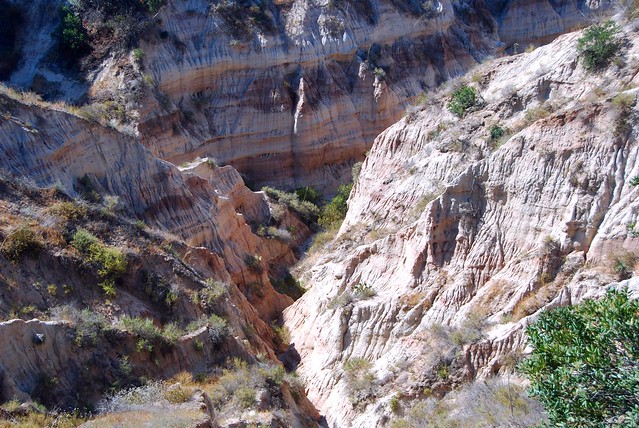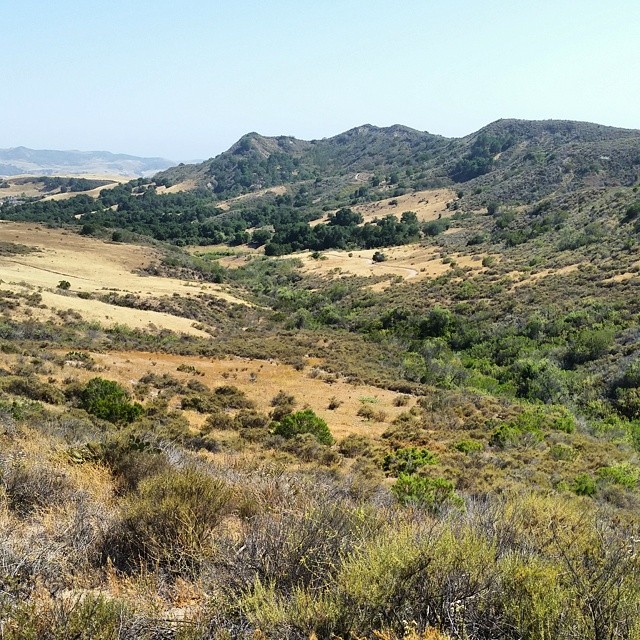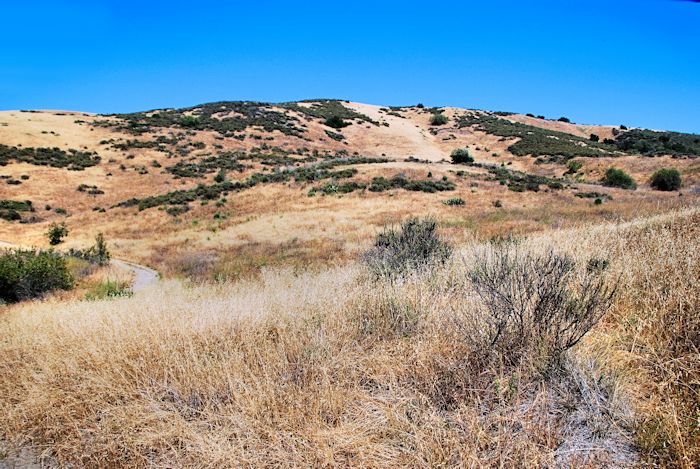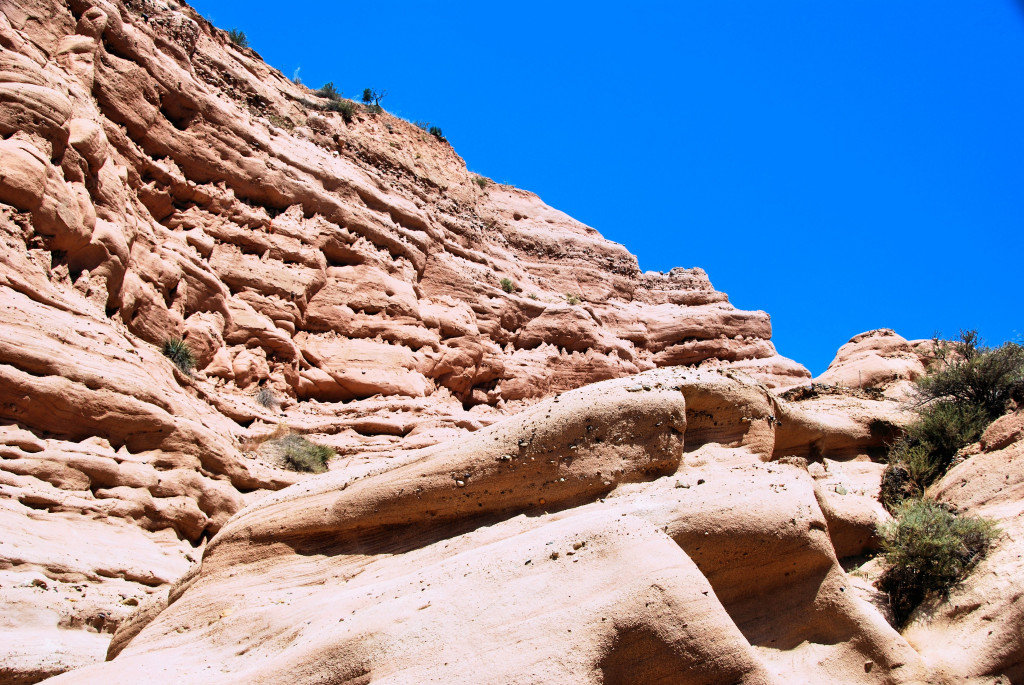The chaos of rocks offered a challenge that proved too formidable for me. I can handle steep hills as long as I can set a steady pace. Fox Run’s boulders gave me no quarter, no opportunity for rhythm, no chance to stop and enjoy the view. The whole of my concentration was given to getting around the next stony protuberance. So I struggled, resting between outcrops to gather my strength and sweating like I was in Miami. When I conquered the last and relatively easy third of the trail — which was precipitous but smooth — I felt nauseous. Some kind of problem — maybe blood sugar, maybe dehydration — tormented me and I could blame that problem on the path I had just clamored up. Unequivocally.
Tag Archives: illustrated
Journey to the Middle of Nowhere
The Middle of Nowhere lay on the line between the Cleveland National Forest and the Fremont Canyon Nature Preserve, among a collection of rocks called “Little Yosemite”. Massive boulders rose from the endless thicket of sagebrush, chaparral mallow, laurel sumac, and — the notorious fire starter — chamise. Some outcrops suggested the skulls of alien monsters, others had descriptive names like the Lizard, the Lamb, and R2D2. The cliffs faced the Santa Anas on one side and the Chino Hills on the other. You could see as far as the San Gabriels which rose from a smoggy valley of steel, concrete, and automobile congestion.
Wavy Water
Our midweek adventure — a scheduled event of the Irvine Ranch Natural Landmarks conservancy — took us four and a half hours to finish, counting the short breaks at The Sinks and Box Spring. The trail began at a notorious local dead end. We followed the water lines up Agua Chinon (“wavy water”) Canyon with no real trouble until we hit a steep loma as hellish as the south slope of Whiting’s Dreaded Hill. The summit brought us face to face with the western section of The Sinks
An inland sea or lake deposited the layers that appear in The Sinks formation about 40 million years ago. A long period of wet weather — sometime in the last million years — super-saturated the hills and caused the looser soil to slide away. The badland that was left exposed layers of harder red and white sediments that draw hikers and bikers to special “open days” at the Limestone Canyon Wilderness Park.
Continue reading
Wagon Wheel Loop
Thomas F. Riley Wilderness wasn’t very big: we rounded the loop in under two hours despite the heat. The park’s bottom lands were covered by some fine live oak forests offering cool shade and thick with poison oak. Much of our route, though, was through open grasslands where the sun burned through our hats. The best part of the journey was the trail end known as Skink Point. The interpretive sign directed you to look at the Santa Ana mountains, but I found the best view lay behind us:
Continue reading
Patterns on the Hills
I took a break from Whiting Ranch to explore the season at nearby O’Neill Regional Park, specifically the Live Oak, the Hoffmann Homestead, and the Vista Trails, a lariat that I began at the corner of Meadow Ridge and Chisolm Trail in Mission Viejo. Summer is the season of death here in Orange County. Memorial Day weekend marks the final demise of the foxtail and wild oat grasses. Gone are the Golden Stars, the mustard, and other competitors for the sun of the open range. The country turns resplendent yellow except for dusky patches of sage, toyon, and chamise creating a pattern on the hills.
Few things can be more frustrating that to aim your eye through your camera’s viewfinder and discover that its battery has died just as a brilliant vista comes into view. This happened to me as I surmounted the hill near the Vista Point and looked down on the Live Oak Trail as it plunged down one slope and crawled up the long ridge that rises after the junction with the Coyote Trail. I sighed and contained a tantrum by remembering that I had my Samsung S5 in my pocket. It couldn’t compete with my Nikon, but it was better than nothing.
Billy Goat Trail
So many rocks! They seem to have dropped from the sky and landed on the peaks of this narrow trail in Whiting Ranch Wilderness Park. Stones of rust and bruise settled in the depressed center of the trail, some loose, some fixed to the ground. I went down the hills slowly, finding footholds and soft soil where I could, grabbing dead brush where it offered itself. When I could feel steady enough to stand on the declivity, I threw the larger stones off the trail. They landed with a thud or, at one place, a click as they fell onto a rock pile that other hikers had hurled before me.
Whiting Red Rock
Shade wreaks a weird effect over the meadows along the Borrego Trail: Where the full sun yellows the grass, shadow keeps some patches green for a few more days.
I found few blossoms other than the last vestiges of the spring’s mustard, the gnarled blooms of incipient heartleaf penstemon, and the brash orange flowers of Bush Monkey Flower. The day was hot. The open sun at the end of the trail made me nauseous, but a deep draft from my Camelbak cured me.
The Red Rocks remain the Red Rocks, undulating down a cliff and through a canyon. My companions found it fit to discuss why some of the rocks were red and others were white. I did not take part in these as I did not answer questions about why I enjoyed learning about nature or defend the theory of evolution from a companion who was distressed by the fact that it wasn’t easy to understand. Perhaps I am meant for the silence of places like this, just as I choose to marvel mutely over stick insects that define the case for species change over time.







